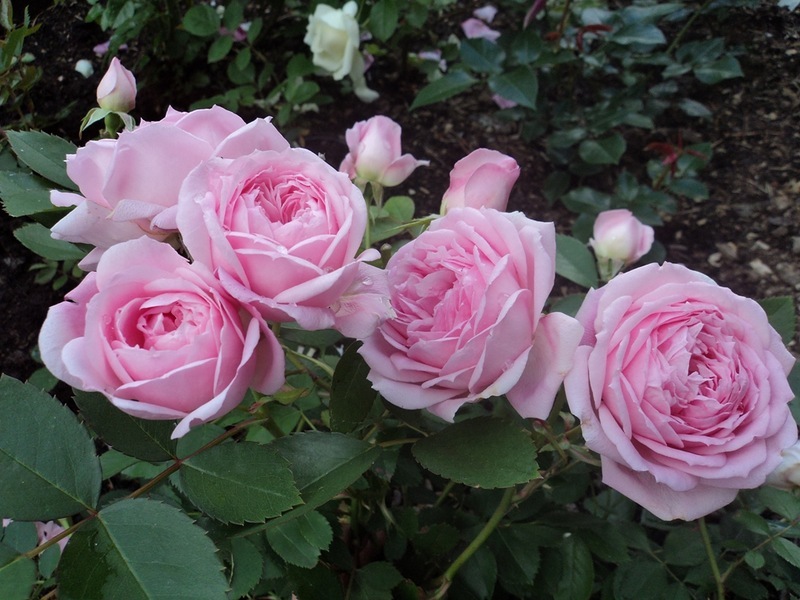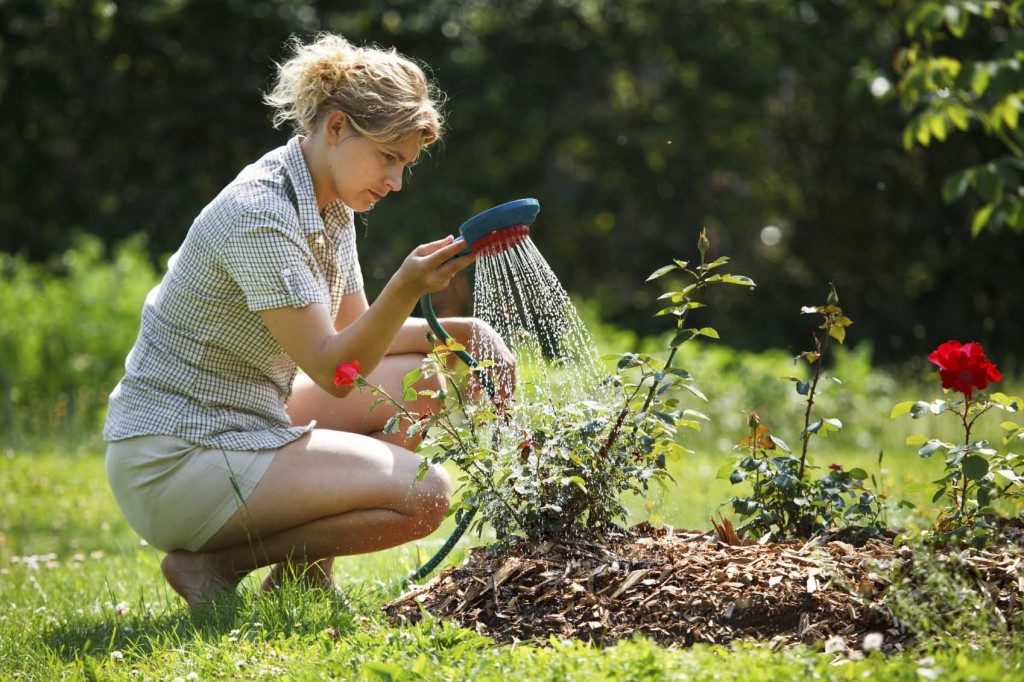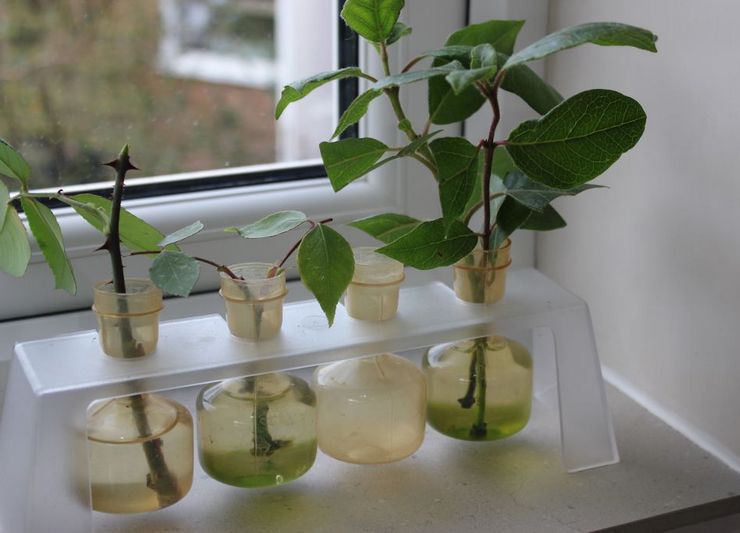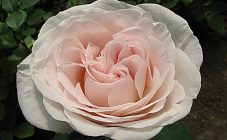Content:
Anyone can grow roses, even an inexperienced gardener. The newly developed varieties of these amazingly beautiful flowers are not too demanding to care for. Among them, the park rose Prairie Joy stands out for its unpretentiousness, which both summer residents and amateur flower growers love to plant.
Description of Prairie Joy rose
Prairie Joy is a rose bred by Canadian breeder Henry Marshall at the end of the last century. The Prairie Joy rose has a regular spherical shape with a rich pink color of the buds, the shade of which is more intense closer to the middle of the flower. Its petals are symmetrically twisted into a socket.
The flowers of the rose are densely double, rather large, 6-7 cm in diameter, racemose. On one brush, five or more buds are tied, with full dissolution they amaze with their lush beauty, almost before the onset of severe frosts they delight with their abundant, lush flowering. Branched bushes 1-1.5 m in height, about 125 cm wide, they grow well, vigorous shoots appear from their base.
Joy Canadian Rose differs from other varieties in its genetic adaptability to survival in harsh climatic conditions. From the name it is clear that the new variety was bred by crossing wild roses growing on the prairie. The main advantages of this variety are:
- withstand frosts down to -35 ° C and more. Do not require shelter for the winter;
- able to adapt to sudden temperature changes;
- recover quickly in cases of freezing;
- are immune, rarely get sick;
- not demanding on the composition of the soil;
- differ in the aesthetic appearance of the bushes;
- bloom profusely and continuously until frost;
- transfer shaded areas;
- drought-resistant;
- unpretentious in care.
Subject to agricultural cultivation techniques, growers can look forward to ennobling their garden with magnificent creations of Canadian breeders.
Landing place
The prairie joy rose loves a lighted planting site, but that it is ventilated and protected from drafts. However, the plant does well in partial shade. It is not recommended to plant in low-lying areas. To plant a flower correctly, you need to: at the bottom of the finished pit, you need to pour fertile soil, consisting of:
- from loam - 60%;
- peat - 30%;
- compost mixture — 10%.
However, the Canadian rose grows well in poor soils.
Landing features
When disembarking, the hole depth is 30 cm, with the same width. If the seedlings have open roots, they should be kept in a solution of a root growth stimulator for about 3-4 hours. Bushes are planted, observing a distance between seedlings of about 60 cm.
In order for additional stems to develop, when planting, the root collar must be deepened 3 cm below the surface of the earth.
Within a week after planting, it is necessary to carefully monitor the seedlings so as not to miss the appearance of harmful insects. Although the Prairie rose is disease resistant, it does not like rainy and cool weather, there is a risk of infection on rainy days. On such days, spraying with a fungicide should be carried out for the purpose of prophylaxis. This procedure is usually performed after rain and in autumn, before entering the winter season.
Care
Care consists of watering, loosening the soil, timely pruning and weed control, as well as top dressing.
Watering
Despite its drought-resistant ability, it is imperative to water the flowers, especially on hot days, 2 times a week. In summer, with the onset of hot days, it is recommended to increase the amount of watering. When watering, the soil should not be overmoistened so as not to cause rotting of the root system. Watering is reduced by autumn.
Pruning
Sanitary and formative pruning of the park rose is carried out in the spring after swelling of the buds. If the gardener is satisfied with the spreading of the bush, then you can skip pruning. However, sanitary pruning must be carried out, cutting off diseased, damaged shoots, thinning out overgrown branches is done.
Top dressing
Rose Prairie Joy needs periodic feeding with organic and mineral fertilizers.
Top dressing is introduced according to the following principle: with the onset of spring, nitrogen fertilizers must be applied, and in the summer the roses are fed with potassium and phosphorus. Before flowering begins, applying fresh cow dung is considered ideal.
Reproduction
Rose Prairie Joy propagates by cuttings. To do this, cut off annual shoots with a garden pruner. Only with this type of reproduction, the plant retains its varietal qualities, and good rooting is achieved. For harvesting, cuttings are taken from strong bushes after the first flowering, then they are brought into the ground. There they are under cover until spring.
If there is no time or a prepared place for planting a cutting of a plant, then you can do this: you need to plant it in a bulky dish with a hole for draining excess water and keep it in a well-lit, but not in a warm place, away from heating appliances. For example, on the balcony. Of course, you must make sure that the temperature does not drop below zero.
The seedling is insulated in the first winter so that it adapts well to frost.
The bushes are planted in the ground with the onset of warm days, when the ground warms up. Experienced flower growers prepare a place for planting in the fall, dig up the ground, while adding compost. The earth should be slightly acidic (6.5).
Despite the fact that the variety is characterized by winter hardiness, in the northern regions it is possible to cover the bushes of the plant, because they freeze to the very base, they will recover only in the middle of summer.
Here are the recommended operations:
- Sprinkle the base of the bushes with 1-3 buckets of humus or compost
- Bend the stems down and fix them with wood slingshots
- Throw in a light covering material, securing it with a load.
With these simple steps, park roses will bloom quickly in spring.
Advantages and disadvantages of the variety
Park Prairie Joy differs from other varieties in that it does not tolerate moisture, especially wet weather. Another drawback can be considered the fact that she does not, like Joy rose, have a characteristic smell inherent in other varieties.
Use in landscape design
For gardening and park design, Prairie Joy Rose is an excellent option. In this culture, refined beauty and unpretentious maintenance are harmoniously combined. It is resistant to adverse factors. When choosing a Pretty Joy rose, gardeners can be sure that it will tolerate frost and bloom in spring, using the bushes it will be possible to create various compositions.Even in a small square, you can find a place for a beautiful queen of flowers, she can become the basis for a flower garden composition, it will look great against the background of a green lawn carpet. If planted for the landscape, the Prairie Joy Canadian Parka rose, it is perfect for creating a hedge.
In order for roses to please with their abundant and lush flowering, you must follow simple rules of care.

















